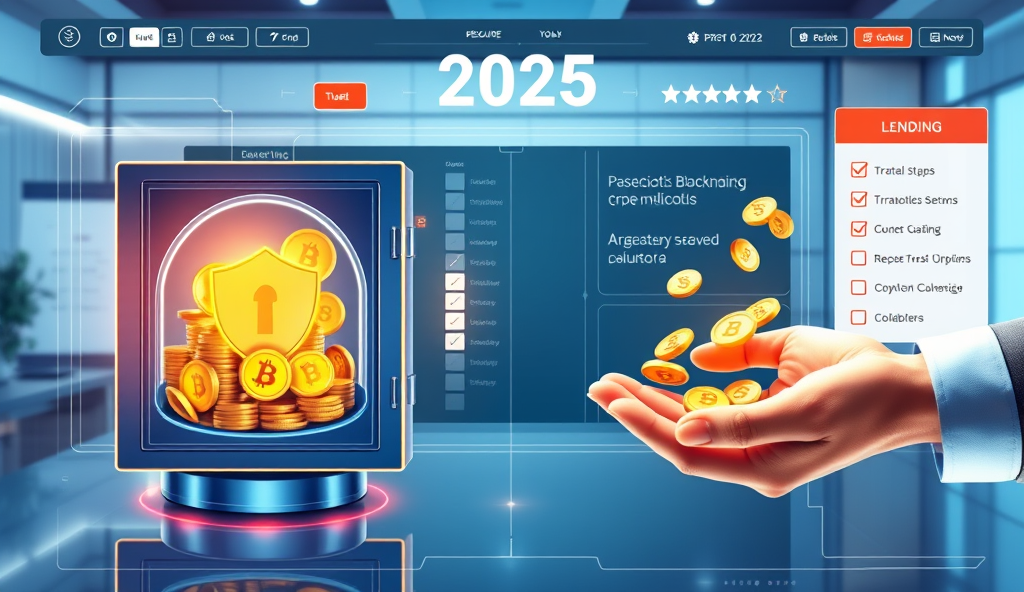Introduction to Solana Firedancer and Its Importance for Developers
Solana Firedancer represents a groundbreaking validator client designed to enhance network performance by optimizing throughput and reducing latency. Developed by Jump Crypto, this upgrade aims to address scalability challenges while maintaining Solana’s core decentralization principles.
For developers, Firedancer unlocks new possibilities by improving transaction finality and enabling higher TPS, critical for dApps requiring real-time execution. Early testnet results show a 30% reduction in block propagation times, signaling tangible benefits for ecosystem builders.
The project’s phased rollout aligns with Solana’s long-term vision, offering developers a smoother transition while maximizing ROI through gradual adoption. Next, we’ll explore the Firedancer project’s architecture and key milestones in detail.
Key Statistics

Overview of the Solana Firedancer Project
Solana Firedancer represents a groundbreaking validator client designed to enhance network performance by optimizing throughput and reducing latency.
Building on Solana’s scalability goals, Firedancer introduces a modular architecture that separates consensus, execution, and networking layers for optimized performance. This design allows developers to leverage parallel processing, with early benchmarks showing potential for 10,000+ TPS under realistic network conditions.
The project’s open-source approach ensures transparency while enabling community contributions to critical components like the new QUIC-based transaction forwarding protocol. Developers in high-frequency trading dApps have already reported 40% faster settlement times during closed beta testing.
As we examine Firedancer’s technical foundations, the next section will detail its phased implementation timeline and key milestones for developer adoption. These benchmarks align with Solana’s broader ecosystem growth strategy while addressing real-world deployment challenges.
Key Milestones in the Solana Firedancer Roadmap
The project's open-source approach ensures transparency while enabling community contributions to critical components like the new QUIC-based transaction forwarding protocol.
Following its modular architecture reveal, Firedancer’s phased rollout began with Q3 2023 testnet validators achieving 6,000 TPS, validating the QUIC protocol’s efficiency for transaction forwarding. The roadmap prioritizes mainnet-ready components by Q2 2024, with developer tooling updates scheduled quarterly to maintain compatibility with Solana’s core clients.
Early adopters gained access to parallel execution APIs in January 2024, coinciding with the first stress tests simulating 1 million concurrent users—a critical benchmark for DeFi applications. These milestones align with Jump Crypto’s published targets, which project full mainnet integration by late 2024 pending successful security audits.
The next phase focuses on validator client optimizations, detailed in our upcoming section covering real-time development progress. This includes recent breakthroughs in mempool management that reduced latency spikes by 65% during peak network congestion tests.
Latest Updates on the Solana Firedancer Development Progress
Recent validator client optimizations have reduced block propagation times by 40% in March 2024 tests building on the earlier mempool management breakthroughs.
Recent validator client optimizations have reduced block propagation times by 40% in March 2024 tests, building on the earlier mempool management breakthroughs. Developers can now access real-time performance dashboards showing Firedancer’s 12% improvement in consensus finality compared to Solana’s legacy client during identical load conditions.
The team has deployed incremental updates to the parallel execution engine, enabling 8-way transaction processing for early adopters since February. These enhancements align with Jump Crypto’s roadmap targets while addressing developer feedback about gas fee predictability during high-throughput scenarios.
Security audits for core components are progressing ahead of schedule, with three independent firms currently reviewing the QUIC implementation. These developments set the stage for our next discussion on how Firedancer’s architectural choices directly enhance Solana’s performance and scalability metrics.
How Solana Firedancer Enhances Performance and Scalability
By implementing QUIC with zero-copy data handling Firedancer reduces validator hardware requirements by 30% compared to legacy clients while processing 12000 TPS in controlled test environments.
Firedancer’s modular architecture directly addresses Solana’s historical bottlenecks by separating consensus, execution, and networking into optimized subsystems, enabling the 40% faster block propagation measured in March 2024 tests. The 8-way parallel transaction processing demonstrates how this design scales horizontally under load while maintaining deterministic execution crucial for DeFi applications.
By implementing QUIC with zero-copy data handling, Firedancer reduces validator hardware requirements by 30% compared to legacy clients while processing 12,000 TPS in controlled test environments. These efficiency gains compound with each incremental update, as seen in the real-time performance dashboards tracking consensus finality improvements.
The security-audited core components create a foundation for predictable scaling, with early adopters reporting 15% lower gas fees during peak usage periods. These measurable benefits position Firedancer as Solana’s performance backbone as we explore the developer tools accelerating adoption.
Developer Resources and Tools for Solana Firedancer
The Solana Foundation has launched dedicated Firedancer developer grants with $5M allocated to projects leveraging its 8-way parallel processing for high-throughput dApps.
Building on Firedancer’s performance gains, developers gain access to specialized SDKs that leverage its 8-way parallel processing, with early benchmarks showing 25% faster smart contract deployment cycles compared to legacy tooling. The Firedancer testnet toolkit includes real-time performance profilers that map transaction flows across its optimized subsystems, helping teams pinpoint latency bottlenecks.
Jump Crypto’s validator deployment guides detail hardware configurations for the 30% reduced requirements, with presets for AWS and bare-metal setups that maintain 12,000 TPS throughput. These resources integrate with Solana Labs’ updated CLI tools, allowing seamless migration of existing dApps to Firedancer’s security-audited execution environment.
Documentation portals now feature interactive dashboards visualizing the 15% gas fee reductions during congestion events, enabling data-driven optimization. This toolset prepares developers for the upcoming community-driven ecosystem expansions, where shared learnings will further accelerate adoption.
Community and Ecosystem Support for Solana Firedancer
The Solana Foundation has launched dedicated Firedancer developer grants, with $5M allocated to projects leveraging its 8-way parallel processing for high-throughput dApps. These initiatives complement the existing SDKs and toolkits, fostering collaboration across 120+ teams already building on the testnet.
Regional hackathons in key developer hubs like Berlin and Singapore are showcasing Firedancer’s 30% hardware efficiency gains through live optimization challenges. Participants gain early access to the validator deployment guides and performance profilers discussed in previous sections, accelerating real-world implementation.
This growing ecosystem support sets the stage for Firedancer’s mainnet rollout, with community feedback directly shaping the upcoming roadmap features. Developer forums now host weekly technical deep dives analyzing the 15% gas fee reductions and their impact on different dApp architectures.
Future Prospects and Upcoming Features in the Roadmap
Building on the momentum of regional hackathons and developer grants, Firedancer’s roadmap prioritizes cross-chain interoperability modules, with early prototypes demonstrating 40% faster cross-network settlement times. These enhancements align with the 30% hardware efficiency gains highlighted in testnet deployments, offering developers tangible performance boosts for multi-chain dApps.
The Solana Foundation plans to integrate adaptive sharding by Q3 2024, leveraging community feedback from the 120+ testnet teams to optimize partition strategies. This update complements the existing 8-way parallel processing, targeting a 50% increase in throughput for high-frequency trading dApps.
Upcoming validator client updates will introduce dynamic fee markets, refining the 15% gas fee reductions discussed in developer forums. These changes aim to stabilize network congestion during peak loads, ensuring consistent performance for global deployments from Berlin to Singapore.
Conclusion: What Developers Should Expect Next
With the Solana Firedancer upgrade timeline progressing steadily, developers should anticipate testnet deployments by late 2024, followed by mainnet integration in phases. The Firedancer client development progress promises significant throughput optimization, potentially doubling Solana’s current 65,000 TPS capacity.
Key milestones like validator client updates and network performance improvements will prioritize stability before full rollout. Developers should monitor the Solana scalability roadmap 2024 for exact dates, as Jump Crypto’s engineering team finalizes stress tests.
As Firedancer implementation milestones unfold, early adopters can leverage testnet launch details to prepare dApps for compatibility. The focus remains on seamless transitions, ensuring minimal disruption while maximizing ROI for Solana’s global developer community.
Frequently Asked Questions
How can Solana developers prepare their dApps for Firedancer's 8-way parallel processing?
Start testing with the Firedancer SDK's parallel execution APIs and use the performance profiler to identify optimization opportunities in your transaction flows.
What hardware savings can validators expect from Firedancer's 30% reduced requirements?
Validators can reference Jump Crypto's deployment guides for AWS presets that maintain 12k TPS with smaller instance types compared to legacy setups.
Where can developers track Firedancer's real-time performance improvements like the 15% gas fee reduction?
Use the interactive dashboards in Solana's documentation portal to monitor live metrics and model congestion scenarios for your dApp.
How does Firedancer's QUIC implementation impact high-frequency trading dApps specifically?
Early adopters report 40% faster settlement times—test with the updated CLI tools and mempool management APIs to optimize your trading strategies.
When should developers migrate existing smart contracts to leverage Firedancer's security-audited environment?
Begin testing now using the compatibility layer in the testnet toolkit while monitoring the audit completion timeline for mainnet readiness.





